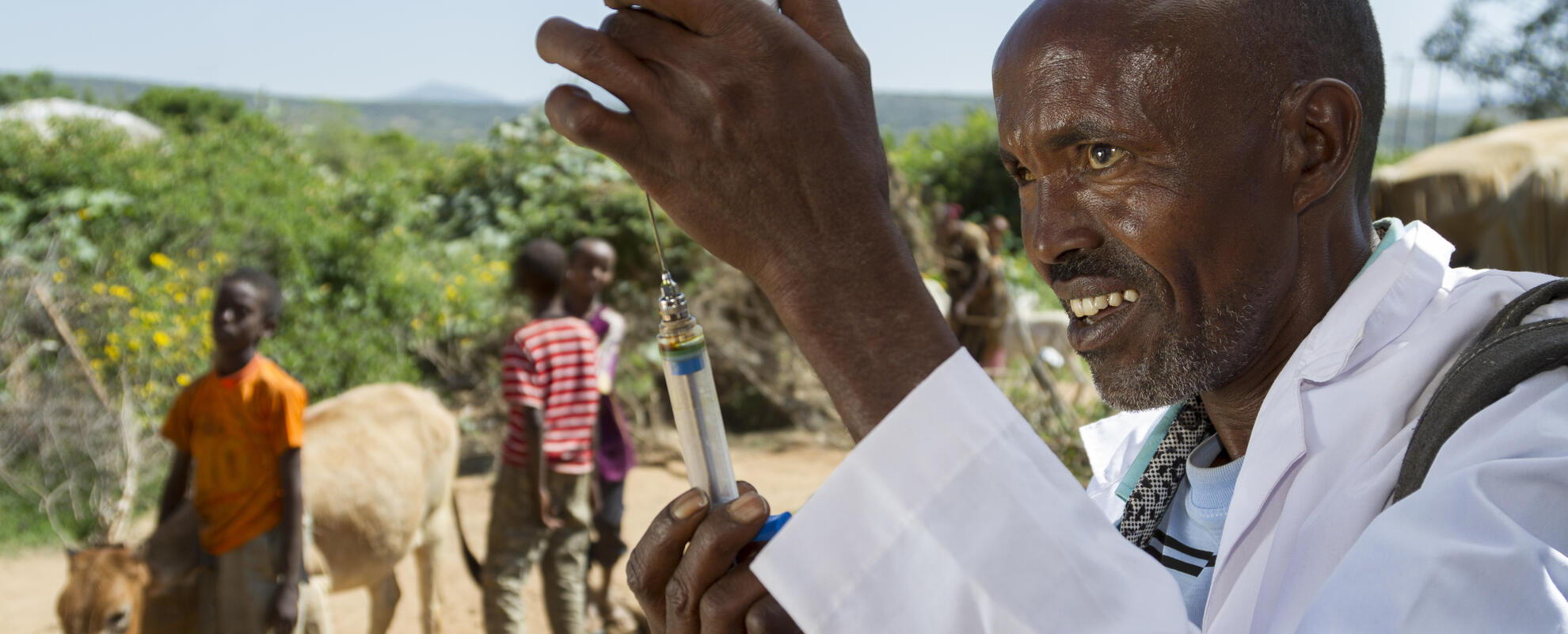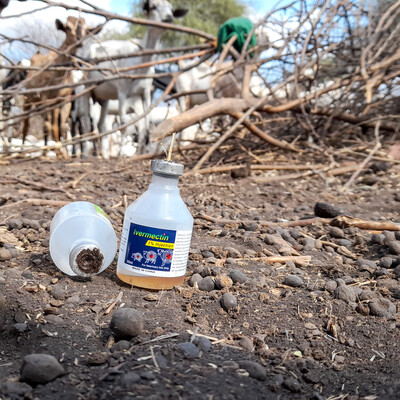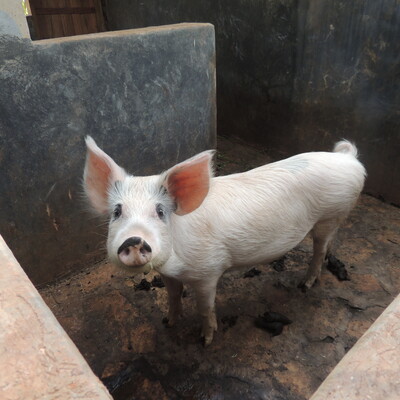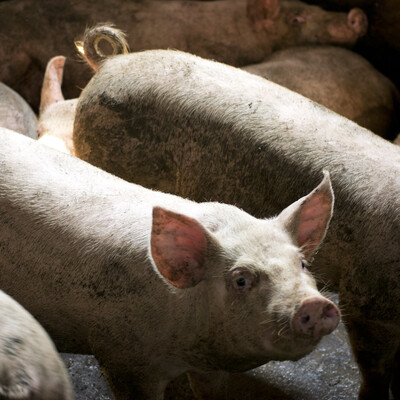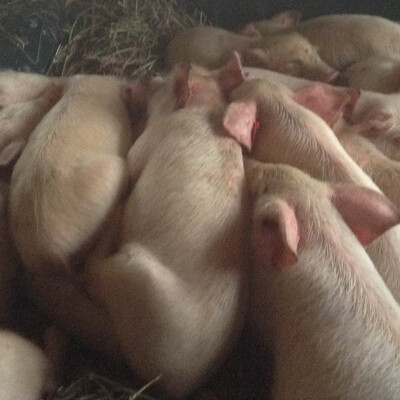
Global Burden of Animal Diseases: A novel approach to understanding and managing disease in livestock and aquaculture
Header image: After training, community animal health workers like Ahmet Mahmoud Habib, in Ethiopia, are able to treat most sick animals (photo credit: Kelley Lynch / USAID Ethiopia).
A new scientific paper outlines how a new(ish) program to assess the Global Burden of Animal Diseases will tackle this assessment in ways that are 'One Health thinking in action'. Two of the 20 authors of the paper are from the International Livestock Research Institute (ILRI).
Summary
'Investments in animal health and veterinary services can have a measurable impact on the health of people and the environment. These investment cases require a baseline metric that describes the burden of animal health and welfare in order to justify and prioritise resource allocation and from which to measure the impact of interventions. This paper is part of a process of scientific enquiry in which problems are identified and solutions sought in an inclusive way. As such, it poses the broad question of what a system to measure animal disease burden on society should look like and what value will it add; and does this in a way so as to be accessible by a wide audience which is encouraged to engage in this debate.
'Given that farmed animals, including those raised by poor smallholders, are an economic entity, this system must be based on economic principles. These poor farmers are negatively impacted by the disparity in animal health technology which can be addressed through a mixture of supply-led and demand-driven interventions, reinforcing the relevance of targeted government and non-governmental organisation financial support. The Global Burden of Animal Diseases (GBADs) programme will glean existing data to measure animal health loss for carefully characterised production systems. Consistent and transparent attribution of animal health loss will enable meaningful comparisons of burden to be made between diseases, production systems and countries, as well as how it is apportioned by people’s socio-economic status and gender.
'GBADs will produce a cloud-based knowledge engine and data portal through which users will access burden metrics and associated visualisations, decision support in the form of future animal health scenarios and the outputs of wider economic modelling.
The vision of GBADs—strengthening the food system for the benefit of society and the environment—is an example of One Health thinking in action.
Introduction
'Years of investment in the development of frameworks, data capture and analysis have allowed estimations of the investments in human health so that today it is possible to find that in 2017 the global human health spending was US$ 7.8 trillion, equivalent to 10% of global gross domestic product (GDP) or US$ 1,080 per capita (ranging from US$ 41 in low-income countries to US$ 2,937 in high-income countries). In contrast, data and information on expenditure for animal health is collected yet disaggregated, often unavailable or uncertain, and unlikely to be easily accessible. There are estimates that the animal health products market was valued at US$ 24 billion in 2015, about 2.5% of the global human health market, yet this lacks information on the costs of services, education, coordination and research investments.
Given that animal health is integral to the well-being of society, understanding animal health investments is critical to support decision-making and achieve a One Health vision. . . .
Importance of livestock to the smallholder farmer
'The challenges that small- and large-scale farmers face in the global context can on the one hand be remarkably similar (for example, the consumption of environmental resources) yet also differ starkly (access to animal health services and technologies). There is disparity in the distribution of animal health systems and infrastructure. A major proportion of livestock are kept in large farms under controlled and intensive conditions. These farms are major users of pharmaceutical products. Yet the majority of the keepers of livestock across the world are small-scale producers. These people are poor and, in many situations, have poor access to veterinary services and technologies. This poor access can be attributed to the lack of funding in many resource-constrained countries. But in many cases, this is an outcome of market failure that requires societal intervention.
'For example, small market size and low willingness to pay for products in lower-income countries means that the high overheads faced by producers of pharmaceutical veterinary products are better met by targeting development and supply towards animal health issues that predominate in high-income countries, where there is a larger market and increased willingness to pay. Availability of these products in low-income countries is not in itself a solution; last mile distribution network initiatives seek to address the high transaction costs that prevent access to animal health technologies. Sustainable solutions for smallholders must take into account the nuanced socioeconomic roles that livestock play in low- and middle-income countries.
The context for the smallholder farmer
'The final report of the World Health Organization (WHO) Commission on Social Determinants of Health 26/05/2021 18:11:00 states, "Inequity in the conditions of daily lives is shaped by deeper social structures and processes; the inequity is systematic, produced by policies that tolerate or actually enforce unfair distribution of and access to power, wealth, and other necessary social resources." This narrative was continued in a report marking the starting point for The Lancet–University of Oslo Commission on Global Governance for Health, which described power asymmetry as the root cause of inequity. Considering that those with power will determine the animal health systems, the risk of an asymmetry of power translating into one of information creates the inevitability of market failures, such as is described above.
It is therefore of moral significance that asymmetry of information is challenged in order to redistribute the power and address inequity in animal health systems.
'Explaining the importance of foot and mouth disease (FMD) control to Juanita Perez and her family, who are sheep farmers high in the Bolivian Andes, could certainly leave one questioning whether or not resources are invested wisely. Juanita trades her sheep and their wool at the local markets. What relevance does the Bolivian FMD control strategy and implications for international trade hold for her? It becomes clear that enabling access to and providing advice on nutrition, genetics and parasite control has the potential to have a tangible impact on the productivity of Juanita’s flock and the wealth and well-being of her family.
It is not wholly surprising that mismatches such as this exist—where well-intentioned policies imposed at the national level, perhaps reflecting a country’s ambitions on the regional or global stage, provide little or no support to the daily problems encountered by farmers producing for their own consumption and the local market.
'Women like Juanita, and the families and flocks they support, play critical roles in human nutrition and health and in society as a whole, providing income, food, clothing, building materials, fertilizer, fuel and draught power. Across the world, 1.3 billion people are directly dependent on food animals for their livelihoods, of whom 600 million, such as Juanita, are smallholder farmers in some of the world’s poorest countries. The health of their animals is under constant pressure from communicable and non-communicable animal diseases, inadequate access to feed, forage and clean water, injuries and predation. For these vulnerable people, poor animal health leads directly to poverty and malnutrition, exposure to zoonotic disease risk, poor health and reduced welfare. Aside from the animal keepers, unhealthy animals themselves suffer. At global level the lower productivity of diseased animals contributes to climate change and environmental degradation, as more resources are required to produce a unit of output.
'Understanding the context for the smallholder farmer and others on the margins of society reemphasises the moral need to address the information asymmetry in animal health systems. A standardised process to understand the burden across the whole of society, that is applied in a consistent and transparent way, is a critical part of the solution. . . .
Conclusions
'The GBADs programme will provide essential baseline information on the social, economic and environmental burden of animal diseases. It will address the needs of keepers of livestock, consumers and the environment by supporting: investment plans, which ensure that there areadequate animal health systems; allocation of resources to problems that most affect their healthand well-being; and evaluation of animal health investments to ensure they are delivering onsocietal outcomes.
'Food safety, nutritional impacts—and existing and emerging zoonotic pathogens in farmed animals—all present challenges and opportunities to be addressed in order to provide high-quality, safe food in order to alleviate the human health burden. In this context, GBADs will partner with global initiatives in human health (GBD, WHO) and plant health (Global Burden of Crop Loss). The food system must be aware of the impact it has both in terms of welfare and diversity of farmed species it relies on and the wildlife on which it undoubtedly can have direct and indirect effects. The food system is a major consumer of land and water resources; it produces, and can capture, environmental pollutants.
Therefore, as society strives for means to ensure a responsible and sustainable impact on the globe’s natural resources, a food system supported by evidence-based decision-making is more important now than ever.'
Read the research paper
Huntington, B., Bernardo, T.M., Bruce, M., Devleesschauwer, B., Gilbert, W., Havelaar, A., Herrero, M., Marsh, T.L., Mesenhowski, S., Pendell, D., Pigott, D., Grace, D. (University of Greenwich and ILRI), Bondad-Reantaso, M., Shaw, A.P., Stacey, D., Stone, M., Torgerson, P., Watkins, K., Wieland, B. (ILRI) and Rushton, J. 2021. Global Burden of Animal Diseases: A novel approach to understanding and managing disease in livestock and aquaculture. Scientific and Technical Review 40(2).
Acknowledgements
The Global Burden of Diseases Programme has received funding from the Bill & Melinda Gates Foundation; the Foreign, Commonwealth and Development Office of the United Kingdom; and the Australian Centre for International Agricultural Research.





